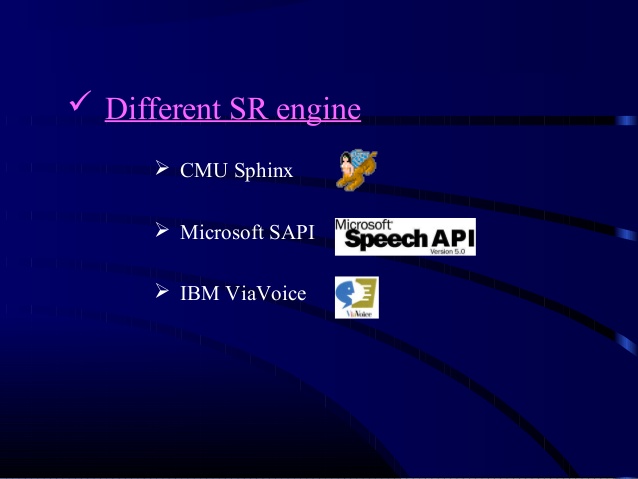

If you attempt to use this with anything other than ETI-Eloquence 6.1, it is very likely that you will notice more crashes than if you use it with Eloquence 6.1.This is most noticeable with the say all command in some screen readers.

A fully stable solution hasn’t been found yet. In some cases, the engine will cut off text.Change directories (cd) to where the Eloquence/ViaVoice files are located.Īt this point, you should be able to use Eloquence/IBM ViaVoice with whichever languages you have.This is necessary in order to set up new SAPI voices. Once you have access to the Eloquence files and have copied the file ibmeci.dll into the same location as TTSEng.dll, perform the following steps: However, once copied, it should be renamed to IBMECI.dll so that it will be loaded properly. Note that if you wish to use this with ETI-Eloquence, the file is called ECI.dll. Once these files are obtained, you should copy the file IBMECI.dll into the same folder where the current dll resides. The first step in setting this up is to get access to the ETI-Eloquence or IBM ViaVoice language files themselves. Stage 1: Obtain IBM ViaVoice/ETI-Eloquence Files It is necessary to do the installation in two stages, as outlined below. Any program which uses the voice selected under "Speech" in Control Panel.Certain computer games which include speech.Book reading applications, for reading text-based books.Screen readers and magnifiers which include speech output.Once installed, you will be able to use these voices with a wide variety of applications, including: This is an attempt to allow ETI-Eloquence and IBM ViaVoice speech synthesizers to be usable with SAPI5, overcoming the issue of not being able to use these voices with many modern applications. While ViaVoice and ETI-Eloquence both did have documented support for SAPI, it was only for version 4, which is no longer supported by Microsoft and many programs do not support it. This means that, for example, if you wanted to use these voices outside of a screen reader, that you were quite limited in the applications that could use it. However, it was often not possible to use these voices with many programs because application developers had to access the speech system through its API, which were mainly only used by screen readers for the blind and visually impaired. IBM offered a text-to-speech solution known as ViaVoice which produces clear speech that has a low disk space and memory footprint, making it suitable for any machine.Ī similar product, called ETI-Eloquence, also produces similar speech, and used the same interface.
#IBM VIAVOICE TTS VOICES FOR WINDOWS WINDOWS#
It is included out of the box on Windows XP and above but can manually be installed on Windows 2000, 98 and NT4. SAPI5 is a standard that allows for text-to-speech and speech recognition capabilities on Windows.


 0 kommentar(er)
0 kommentar(er)
